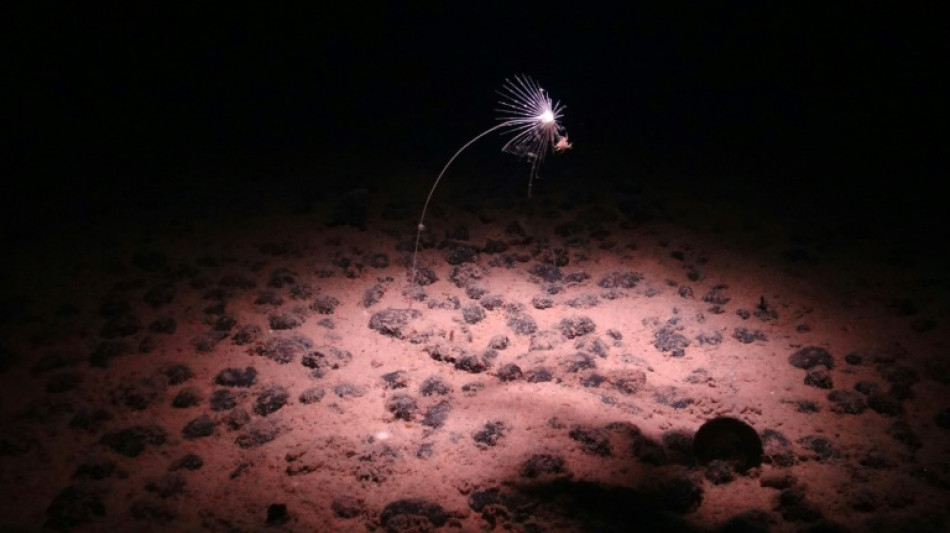
-
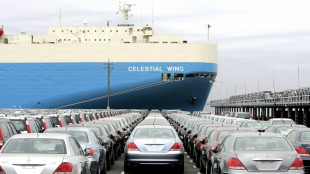 Japan says US tariffs 'extremely regrettable', may break WTO rules
Japan says US tariffs 'extremely regrettable', may break WTO rules
-
South Koreans anxious, angry as court to rule on impeached president
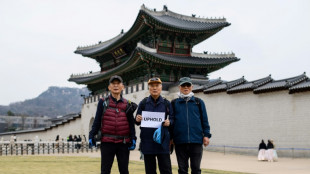
-
 Juve at in-form Roma with Champions League in the balance
Juve at in-form Roma with Champions League in the balance
-
Injuries put undermanned Bayern's title bid to the test

-
 Ovechkin scores 892nd goal -- three away from Gretzky's NHL record
Ovechkin scores 892nd goal -- three away from Gretzky's NHL record
-
Australian former rugby star Petaia signs for NFL's Chargers

-
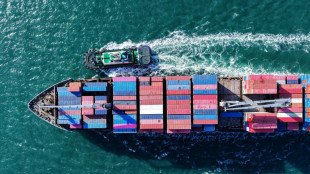 China says opposes new US tariffs, vows 'countermeasures'
China says opposes new US tariffs, vows 'countermeasures'
-
Athletics world watching as 'Grand Slam Track' prepares for launch

-
 Heat humble Celtics for sixth straight win, Cavs top Knicks
Heat humble Celtics for sixth straight win, Cavs top Knicks
-
Quake-hit Myanmar's junta chief to head to Bangkok summit
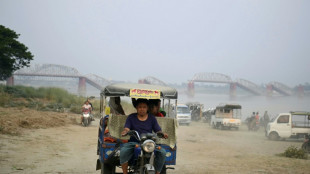
-
 New Spielberg, Nolan films teased at CinemaCon
New Spielberg, Nolan films teased at CinemaCon
-
Shaken NATO allies to meet Trump's top diplomat

-
 Israel's Netanyahu arrives in Hungary, defying ICC warrant
Israel's Netanyahu arrives in Hungary, defying ICC warrant
-
Shiny and deadly, unexploded munitions a threat to Gaza children

-
 Stocks tank, havens rally as Trump tariffs fan trade war
Stocks tank, havens rally as Trump tariffs fan trade war
-
Altomare hangs on to tie defending champ Korda at LPGA Match Play

-
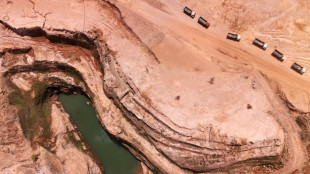 Paraguay gold rush leaves tea producers bitter
Paraguay gold rush leaves tea producers bitter
-
Health concerns swirl as Bolivian city drowns in rubbish
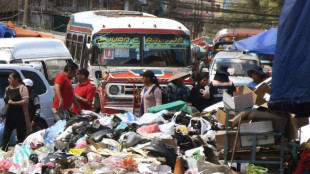
-
 Syria says deadly Israeli strikes a 'blatant violation'
Syria says deadly Israeli strikes a 'blatant violation'
-
Financial markets tumble after Trump tariff announcement

-
 Starbucks faces new hot spill lawsuits weeks after $50mn ruling
Starbucks faces new hot spill lawsuits weeks after $50mn ruling
-
Europe riled, but plans cool-headed response to Trump's tariffs

-
 'Shenmue' voted most influential video game ever in UK poll
'Shenmue' voted most influential video game ever in UK poll
-
New coal capacity hit 20-year low in 2024: report

-
 Revealed: Why monkeys are better at yodelling than humans
Revealed: Why monkeys are better at yodelling than humans
-
Key details on Trump's market-shaking tariffs
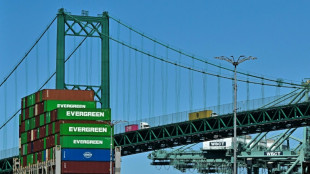
-
 'A little tough love': Top quotes from Trump tariff talk
'A little tough love': Top quotes from Trump tariff talk
-
US business groups voice dismay at Trump's new tariffs
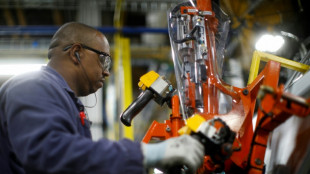
-
 Grealish dedicates Man City goal to late brother
Grealish dedicates Man City goal to late brother
-
US tariffs take aim everywhere, including uninhabited islands

-
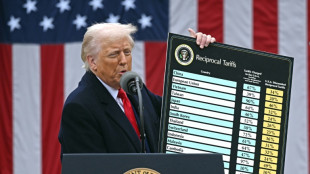 Trump sparks trade war with sweeping global tariffs
Trump sparks trade war with sweeping global tariffs
-
Israeli strikes hit Damascus, central Syria; monitor says 4 dead

-
 Slot 'hates' offside rule that gave Liverpool win over Everton
Slot 'hates' offside rule that gave Liverpool win over Everton
-
US stocks end up, but volatility ahead after latest Trump tariffs

-
 Barca oust Atletico to set up Clasico Copa del Rey final
Barca oust Atletico to set up Clasico Copa del Rey final
-
Mourinho grabs Galatasaray coach's face after losing Istanbul derby

-
 Grealish strikes early as Man City move up to fourth in Premier League
Grealish strikes early as Man City move up to fourth in Premier League
-
Reims edge out fourth-tier Cannes to set up PSG French Cup final

-
 Liverpool beat Everton as title looms, Man City win without Haaland
Liverpool beat Everton as title looms, Man City win without Haaland
-
Jota wins bad-tempered derby as Liverpool move 12 points clear

-
 Inter and Milan level in derby Italian Cup semi
Inter and Milan level in derby Italian Cup semi
-
Stuttgart beat Leipzig to reach German Cup final

-
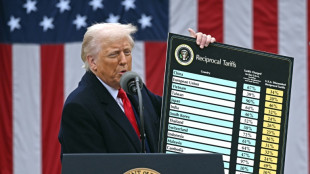 Trump unveils sweeping global tariffs
Trump unveils sweeping global tariffs
-
Italian director Nanni Moretti in hospital after heart attack: media

-
 LIV Golf stars playing at Doral with Masters on their minds
LIV Golf stars playing at Doral with Masters on their minds
-
Trump unveils sweeping 'Liberation Day' tariffs

-
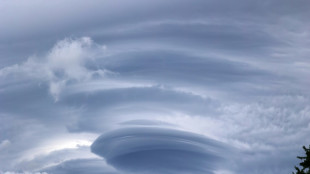 Most deadly 2024 hurricane names retired from use: UN agency
Most deadly 2024 hurricane names retired from use: UN agency
-
Boeing chief reports progress to Senate panel after 'serious missteps'

-
 Is Musk's political career descending to Earth?
Is Musk's political career descending to Earth?
-
On Mexico-US border, Trump's 'Liberation Day' brings fears for future
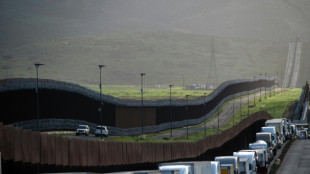

Mineral-rich nodules and the battle over mining the deep sea
They might look like pebbles strewn across the seafloor, but to the unique animals of the ocean deep, polymetallic nodules are a crucial habitat.
To the mining firms vying to extract them, on the other hand, they promise to be a "battery in a rock."
These nodules, found on the seafloor several kilometers below the surface, are to be the subject of the first submarine mining contract application, which the government of Nauru is expected to soon submit to the International Seabed Authority (ISA).
The contract is for Nori, Nauru Ocean Resources Inc, a subsidiary of Canada's The Metals Company.
This has caused concern among conservationists and scientists, who fear the severe impacts of mining a relatively untouched region of the planet that is rich in life, much of which remains unknown to science.
- Ancient -
Polymetallic nodules are most abundant in the Clarion-Clipperton Zone (CCZ) -- off the west coast of Mexico in the Pacific -- as well as in the central Indian Ocean and in the Peruvian Basin, according to the ISA.
The nodules were probably formed over millions of years.
They likely started off as solid fragments -- perhaps a shark tooth -- that sank down to the soft muddy seabed, then grew slowly through the accumulation of minerals present in the water in extremely low concentrations.
Today, they reach up to 20 centimeters (nearly 8 inches) in size: "metal pebbles," according to the French Research Institute for Exploitation of the Sea.
Adrian Glover, of Britain's Natural History Museum, thinks of them as like "potatoes" scattered on the seabed, roughly 15 to 20 kilograms (33 to 44 pounds) of them per square meter.
One of the reasons why the nodules have never been buried under the mud in the Pacific is because the sea is food poor, with fewer dead organisms -- known as "marine snow" -- drifting down to the depths to eventually become part of the seafloor mud.
Sedimentation rates in some areas of the CCZ are "almost zero", Glover said, amounting to just a centimeter per thousand years.
The nodules were first recovered from the Pacific deep in the 1870s by the Challenger expedition, which used thousands of meters of hemp rope, a steam-powered winch and plenty of manpower to dredge the westerly part of the CCZ.
"Straightaway they realized they were very interesting, it was actually one of the biggest discoveries of the voyage for them," said Glover.
But they were not considered to be a "resource," he added.
- 'Clean' power? -
Some 20 companies or research centers have been awarded exploration contracts by the ISA for these nodules. One of these is Nori, whose contract covers four zones totalling some 75,000 square kilometers (about 30,000 square miles) in the CCZ.
These nodules are mainly composed of manganese and iron, but they also contain strategic minerals such as cobalt, nickel and copper.
According to the ISA, the CCZ contains around 21 billion metric tons of nodules, which could correspond to a reserve of six billion metric tons of manganese, 270 million metric tons of nickel and 44 million metric tons of cobalt, exceeding the known totals of these three minerals on land.
Advocates of undersea mining point to their potential use for green technology, particularly for electric vehicles.
"A battery in a rock," says The Metals Company.
"Polymetallic nodules are the cleanest path toward electric vehicles."
But that is an argument rejected by environmental NGOs and some scientists.
This claim is "more public relations than scientific fact", Michael Norton, of the European Academies' Science Advisory Council, told AFP, calling it "rather misleading" to say that demand cannot be met without undersea minerals.
- Impact fears -
Unlike the other two types of subsea mining resources regulated by the ISA -- including the mining of hydrothermal vents -- nodules do not require digging or cutting.
In tests carried out at the end of 2022, Nori lowered a collector vehicle to a depth of 4.3 kilometers (about 2.7 miles).
It swallowed nodules and sediment and then separated them, transporting the nodules to the surface vessel via a giant pipe and discharging the sediment into the water.
Catherine Weller, global policy director at the conservation organization Fauna & Flora, said that while the nodules are lying on the seafloor, they cannot just be "plucked" individually.
The impacts on the wider ocean system of churning up sediment and releasing wastewater was "simply unknown," she added.
Weller said the unique composition of the nodules which attracts mining firms is also what makes them such a special habitat for the creatures that live in the ocean depths.
"So they themselves are a really important part of the deep sea system."
A.Mahlangu--AMWN

